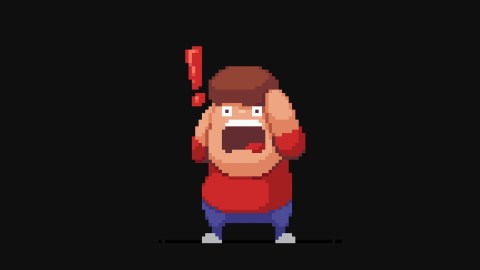Why gamifying the workplace can be a nightmare for workers

- Gamification has come to workplaces everywhere.
- Games presented to workers at companies like Amazon encourage them to work harder and for longer hours, which amounts to cutting their wages.
- These games are no reward for endless, grueling work. In fact, they exacerbate many difficult aspects of the work.
Excerpted from You’ve Been Played: How Corporations, Governments, and Schools Use Games to Control Us All by Adrian Hon. Copyright © 2022. Available from Basic Books, an imprint of Hachette Book Group, Inc.
Every week brings word of another company bringing gamification to the workplace, whether it’s Amazon workers in India competing to deliver packages in order to score “runs” in a thirty-day, cricket-themed Delivery Premier League for rewards like smartphones and motorbikes, or United Airlines’ short-lived experiment to help staff “build excitement and a sense of accomplishment” by swapping their bonus with a lottery — available only for those with perfect attendance records, of course. Uber, Lyft, Domino’s, Instacart, Kroger, T-Mobile, Microsoft, Barclays, and Unilever all use gamification on millions of workers. At this point, it’d be easier to list the major companies that aren’t somehow gamifying their workers’ lives.
I’ve long been skeptical of workplace gamification. More often than not, it doesn’t even try to make difficult or repetitive activities more fun, like I’ve done with my own games. Instead, the games are usually paper-thin layerings of points, badges, rewards, and leaderboards on top of existing task-tracking systems, nagging workers to pack boxes faster or keep driving longer — generic gamification at its finest.
Despite my skepticism, I have to admit it’s at least possible that some instances of workplace gamification are effective in improving worker happiness, if only because there’s no conclusive evidence either way; most companies refuse to share the results of internally commissioned research, and any research that makes it through to the public is likely to be carefully vetted to paint a glowing picture.
Yet even with this inherent bias, the few studies that systematically examine the effectiveness of workplace gamification yield mixed results. Staff tend to work harder or become happier in the short term, but after a few months, the effect disappears. In some cases, the effect even goes into re- verse, with performance dropping below its original level. Since each in- stance of gamification is different from the next, it’s hard to draw broad conclusions, but the likely explanation for the short-term improvement is the “novelty effect,” a catch-all term for what happens when you change the environment or technology involved in a task.
It’s easy to see what’s behind the novelty effect. If someone changed the layout of your office, installed new carpet, and introduced a weekly lottery for the best performers, you might appreciate the extra attention shown by your employers and put in a little more effort. But after a few weeks, you get used to the new office layout. You win the lottery once, but the prize of a twenty-dollar Amazon voucher isn’t exactly life-changing, and so you go back to working just as you did before. That’s why the novelty effect eventually wears off — nothing important about the nature of your work has actually changed. If it was boring before, it’s still boring now. In fact, it might seem even more boring because it’s clear your bosses weren’t actually paying any attention to you — they were just running an experiment — so you lose even more interest in your work.
Depressing, right? But it also poses a mystery. If the evidence indicates workplace gamification doesn’t significantly increase worker output or hap- piness, why do companies keep trying it?
The obvious answer is the same reason for any trendy but unproven idea: everyone else is doing it. If you’re running HR at a big company and you want to keep moving up the corporate ladder, you need to look like you’re doing something useful and innovative. Gamification fits perfectly. It’s new, but not too new, it taps into cultural trends that the all-important millennials and Gen Z enjoy, and there are plenty of off-the-shelf gamification platforms that don’t require you to make major changes to your corporate structure or processes. And if it doesn’t work? No one’s going to blame you for trying, not that most companies even bother evaluating these kinds of experiments. That’s the power of a charismatic technology.
If this explanation were true, we’d expect gamification to meet the same fate as most corporate fads do after a few years: a quick, silent death. That may yet come to pass, but I’ve waited in vain for years for workplace gamification to die. Instead, the opposite has happened: it keeps growing.
So there must be another explanation. Perhaps gamification really is helping companies increase their profits, but not in the way I first imagined. Rather than boosting happiness or productivity, companies can increase profits by cutting costs. Payroll comprises a hefty chunk of most companies’ expenses, so any reduction is important, but unfortunately for owners, staff tend to get upset if you cut their pay. That’s where gamification comes in handy — it provides a more indirect strategy for reducing wages. United Airlines’ attempt in 2018 to replace bonuses with a much cheaper gamified lottery was a little too transparent, resulting in its swift reversal amid worker fury, but other companies have been more successful in effectively cutting salaries and bonuses by means of gamification, particularly amongst low- wage employees.
In Emily Guendelsberger’s book On the Clock: What Low-Wage Work Did to Me and How It Drives America Insane, she describes the reward Amazon warehouse workers get if they make a hundred picks in an hour: one or two “vendor dollars” valid in some (but not all) of the vending machines in the building. In 2019, Postyn Smith, another former Amazon warehouse worker, described the more sophisticated FC Games (after “Fulfillment Center,” Amazon’s name for its warehouses) he encountered on screens in stowing and picking stations, the department with the highest attrition rate at his warehouse: “Most of the games involve some aspect of competition. You might race one-on-one as flying dragons against a nearby worker or compete as a floor against another floor for your Amazon mascot to run faster around the course. In another game, you attempt to complete missions that have you work faster and faster for longer periods of time. They also provide incentives that boost your score for returning from break faster. The programs have finely tuned tricks to tap into your mind so that we work harder, faster, and longer.”
There’s another way to describe workers labouring longer for the same pay: it’s called cutting their wages. What’s more, these long, high-pressure hours come at a terrible human cost. As Guendelsberger has written, countless Amazon warehouse workers are subject to physical pain and exhaustion, and according to reporting by Reveal, the rate of serious injuries at their facilities is more than double the national average for the warehousing industry.
According to Smith, “One of the game designers mentioned to me that after they introduced the games into the stow department, they were having trouble with getting stowers to engage with them. Months later, many of the menu screens sit idle. Many people so infrequently interact with the screens that they sit idle with a grey tint and a spinning idle cursor.”
The FC Games were most useful, Smith tells us, not as entertainment or even as a distraction, but for finding out whether they’d made their rate for the day, so they’d know in advance whether they were going to be written up. For Smith, the novelty effect didn’t last long: “The ‘FC Games’ are not even a Band-Aid for the symptoms wrought by the grueling nature of the task, the endlessness of the work, and confronting what infinity mentally feels like. In fact, the games exacerbate many difficult aspects of the work.”





